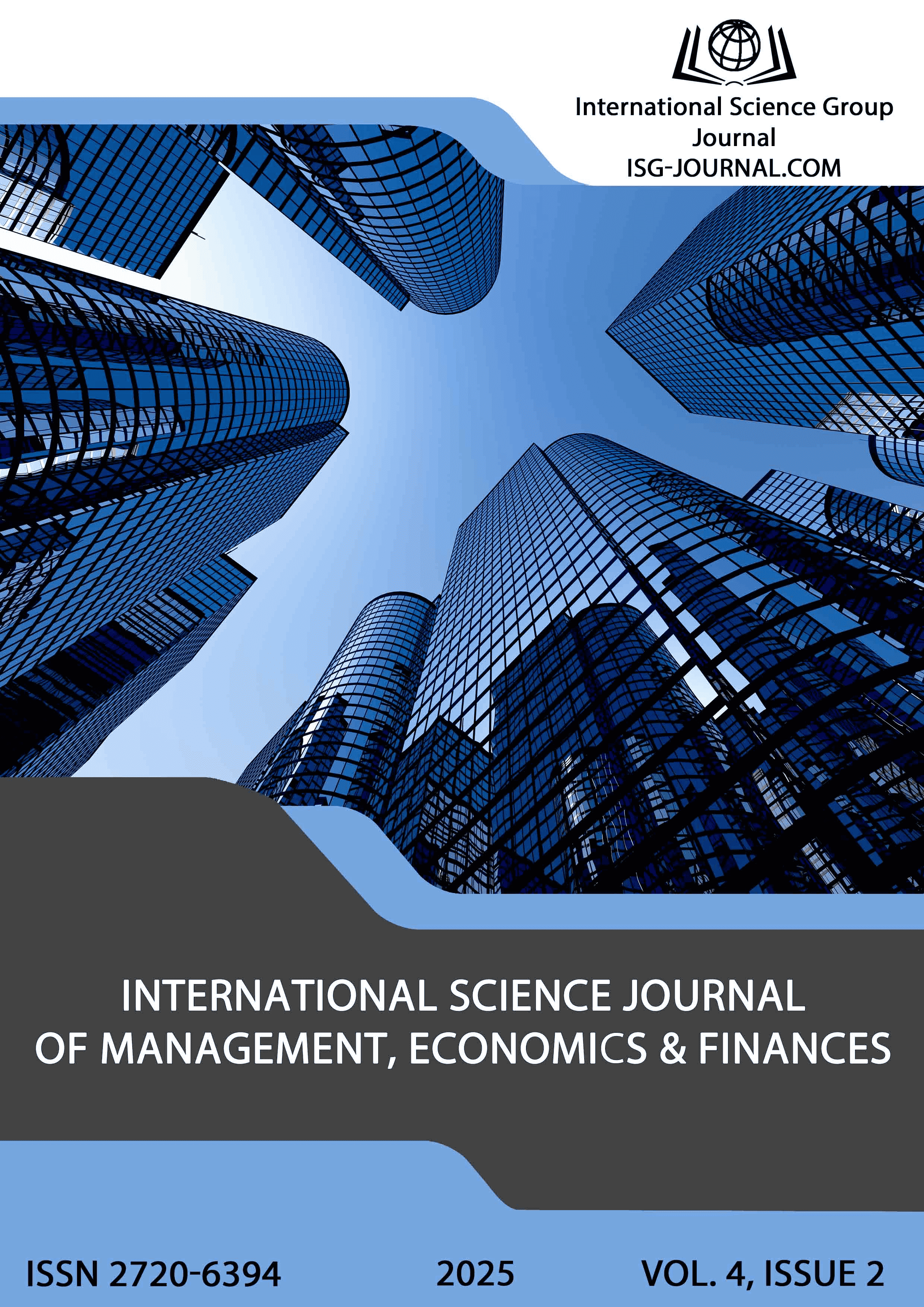Human capital in public authorities and innovation institutions: a model of mutual influence
DOI:
https://doi.org/10.46299/j.isjmef.20250402.04Keywords:
human capital, public authorities, innovation institutions, human resources analytics, public-private partnership, innovation funding, educational alliances, regulatory environment, model of mutual influenceAbstract
The article explores the mutual influence of human capital in public authorities and innovation institutions as a key factor in effective governance and the national innovation system development. The proposed model of mutual influence considers the use of human resources analytics to optimize managerial decision-making, funding of innovation projects through the state grants and venture capital funds, as well as the formation of educational alliances between universities, the state, and businesses. The analysis of international experience has demonstrated that effective human capital management in the public sector is a key driver of innovation development. The implementation of analytical human resources systems in public administration, funding of research, and commercialization of scientific developments, along with simplifying the regulatory environment through public-private partnership mechanisms, contribute to increasing innovation activity. The practical significance of this study lies in the potential application of the proposed model to reform public policy in human capital management. The implementation of initiatives such as developing a national human capital management platform, enhancing international workforce mobility, and supporting educational initiatives will contribute to increased productivity, reduced bureaucratic barriers, and the formation of a competitive knowledge-based economy. The prospects for further research include a detailed analysis of the impact of digital technologies on human capital development, an assessment of the effectiveness of the proposed interaction mechanisms, and the adaptation of international experience to the Ukrainian context. The research findings can be applied to the development of strategic policies in the field of human resource management in public administration and the business environment.References
Álvarez-Gutiérrez, F. J., Stone, D. L., Castaño, A. M., & García-Izquierdo, A. L. (2022). Human Resources Analytics: A Systematic Review from a Sustainable Management Approach. Revista de Psicología del Trabajo y de las Organizaciones, 38(3), 129–147. https://doi.org/10.5093/jwop2022a18
Bodnar, K. (2023). From People to Public Policy: the Role of Human Capital in Sustainable Post-War Development of Ukraine. Pressing Problems of Public Administration, 2(63), 128–142. https://
Cho, W., Choi, S., & Choi, H. (2023). Human Resources Analytics for Public Personnel Management: Concepts, Cases, and Caveats. Administrative Sciences, 13(2), 41, 1–22. https://doi.org/10.3390/admsci13020041
Fedyk, O., & Fedyk, S. (2025). Innovations in Public Administration: the Experience of Developed Countries and Prospects for Their Implementation in Ukraine. University Scientific Notes, 68–75. https://
George, B. (2020). Successful Strategic Plan Implementation in Public Organizations: Connecting People, Process, and Plan (3Ps). Public Administration Review, 81(4), 793–798. https://doi.org/10.1111/puar.13187
Gorodetska, T, Larina, T., & Lypovyi, D. (2025). The Impact of Human Capital on the Efficiency of Scientific Research and Innovation in the Modern Economy. Herald of Khmelnytskyi National University. Economic sciences, 338(1), 370–376. https://doi.org/10.31891/2307-5740-2025-338-54
Londar, L. (2021). Development of Human Capital in Ukraine through Expanded Public Finances. Educational Analytics of Ukraine, (1), 21–38. https://
Monferdini, L., & Bottani, E. (2024). How do Businesses Utilize Change Management for Process Optimization? A Cross-Analysis among Industrial Sectors. Business Process Management Journal, 30(8), 371–414. https://doi.org/10.1108/bpmj-03-2024-0158
Podra, O. (2020). Innovative Development and Human Capital of Ukraine: Trends, Problems and Prospects. Management and Entrepreneurship in Ukraine: the stages of formation and problems of development, 2020(2), 133–144. https
Rahayu, W. A., & Kala’lembang, A. (2023). Analysis of the Role and Motivation of Human Capital in the Post-Pandemic Period of COVID-19. Management and Entrepreneurship: Trends of Development, 23(1), 28–36. https://doi.org/10.26661/2522-1566/2023-1/23-03
Rodrik, D. (2020). Putting Global Governance in Its Place. The World Bank Research Observer, 35(1), 1–18. https://doi.org/10.1093/wbro/lkz008
Shevchenko, D. (2023). Improving the System of State Regulation of Human Capital in Ukraine. Via Economica, (3), 103–107. https://
Stephan, U. (2022). Cross-Cultural Innovation and Entrepreneurship. Annual Review of Organizational Psychology and Organizational Behavior, 9(1), 277–308. https://
Tereshchenko, D. (2020). Formation of Government Regulation Mechanisms with Human Capital Development. Investments: Practice and Experience, (4), 103–108. https://doi.org/10.32702/2306-6814.2020.4.103
de Wit, A., & Bekkers, R. (2020). Can Charitable Donations Compensate for a Reduction in Government Funding? The Role of Information. Public Administration Review, 80(2), 294–304. https://doi.org/10.1111/puar.13154
Downloads
Published
How to Cite
Issue
Section
License
Copyright (c) 2025 Anastasiya Ilyina

This work is licensed under a Creative Commons Attribution 4.0 International License.






